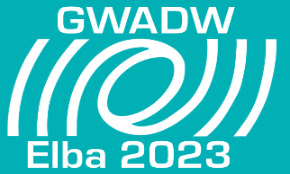Speaker
Description
Opto-mechanical sensors such as gravitational wave detectors are limited by the standard quantum limit (SQL). One way to surpass the SQL is coherent quantum-noise cancellation (CQNC). In CQNC, the quantum back-action noise from the opto-mechanical system is cancelled by an effective negative-mass oscillator (ENMO). In our approach to realising CQNC, the positive-mass oscillator and the effective negative-mass oscillator are cascaded in series all optically. Both systems can be characterised independently first.
The opto-mechanical cavity is formed by a membrane at the edge (MATE) system. For this meter system, the opto-mechanical coupling strength and other relevant parameters, such as the linewidth can be measured.
The ENMO consists of a particular two-mode squeezer where both polarisations are coupled. In this cavity, a waveplate acts as the coupling element and a type II PPKTP crystal as the down-conversion element. Here, e.g. the coupling strengths and cavity linewidths are of interest.
We present the current status of the two subsystems and give the next steps towards their combination in a CQNC experiment.

